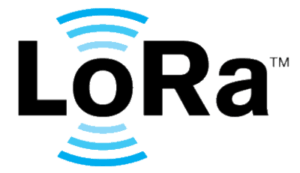In my previous post about Low-Power Wide-Area Network (LPWAN), we reviewed the various competing standards. In this post, I want to drill into LoRa a little deeper, as it is gaining a significant amount of market traction. In particular, I want to answer: who are the LoRa players and how do they fit together?
LoRaWAN for Maximum Battery Life and Network Capacity
LoRaWAN is an LPWAN specification intended for wireless, battery-operated things in regional, national, or global networks. LoRa targets key requirements for the Internet of Things, such as secure bi-directional communication, mobility, and localization services. The LoRa network architecture is a star-of-stars topology in which gateways are transparent bridges relaying messages between end-devices and a central network server. Gateways are connected to the network server via standard IP connections while end-devices use single-hop wireless communication to one or many gateways. Communication between end-devices and gateways is spread out on different frequency channels and data rates, and the selection of the data rate is a trade-off between communication range and message duration. LoRa data rates range from 0.3 kbps to 50 kbps. To maximize both battery life of the end-devices and overall network capacity, the LoRaWAN network server manages the data rate and RF output for each end-device individually by means of an adaptive data rate (ADR) scheme.

Where to Get LoRa Radio
What this means is that LoRa is a standard, so when you want to build a LoRa network you need to select a radio for your end-devices and select service provider (or deploy your own gateways). Semtech is the company that owns the IP for the LoRa radio; they also manufacture them. Additionally, Semtech has licensed the radio IP to ST Microelectronics and Microchip, and Microchip is already selling LoRa radios.
In terms of back-end service, there are two ways you can go. First, you can set up your own base station(s) and manage your own network. This might be very attractive if your application is in a specific geography (such as a ski resort or an oil field). If you want to manage your own network, then Multitech provides some interesting gateway options, as does LinkLabs. In addition to providing gateway hardware, the LinkLabs Symphony Link product also provides a host of tools that augment the basic LoRa standard.
If your application is not confined to a specific geography, then you should identify a suitable service provider that covers your target markets. You can try Senet (www.senetco.com) if you are looking for LoRa. If you want to consider a different LPWAN technology (instead of LoRa), then you could look at Sigfox. Right now, SigFox is rolling out their LPWAN service to 100 US cities and has already started service in dozens of other countries. It is likely we will see the cable companies participating in the market as well.
In summary, LoRa is a standard that is currently rolling out in the various markets. Semtech, Microchip, and eventually ST Microelectronics are the companies where you buy the LoRa radio. Link Labs provides a variety of extra tools on top of LoRa and offers a range of products necessary to build your own gateway so you can maintain a private LoRa network.
This post has been edited to correct an error in describing the SigFox rollout.
Additional Resources
Check out our other blog posts on LoRa:
